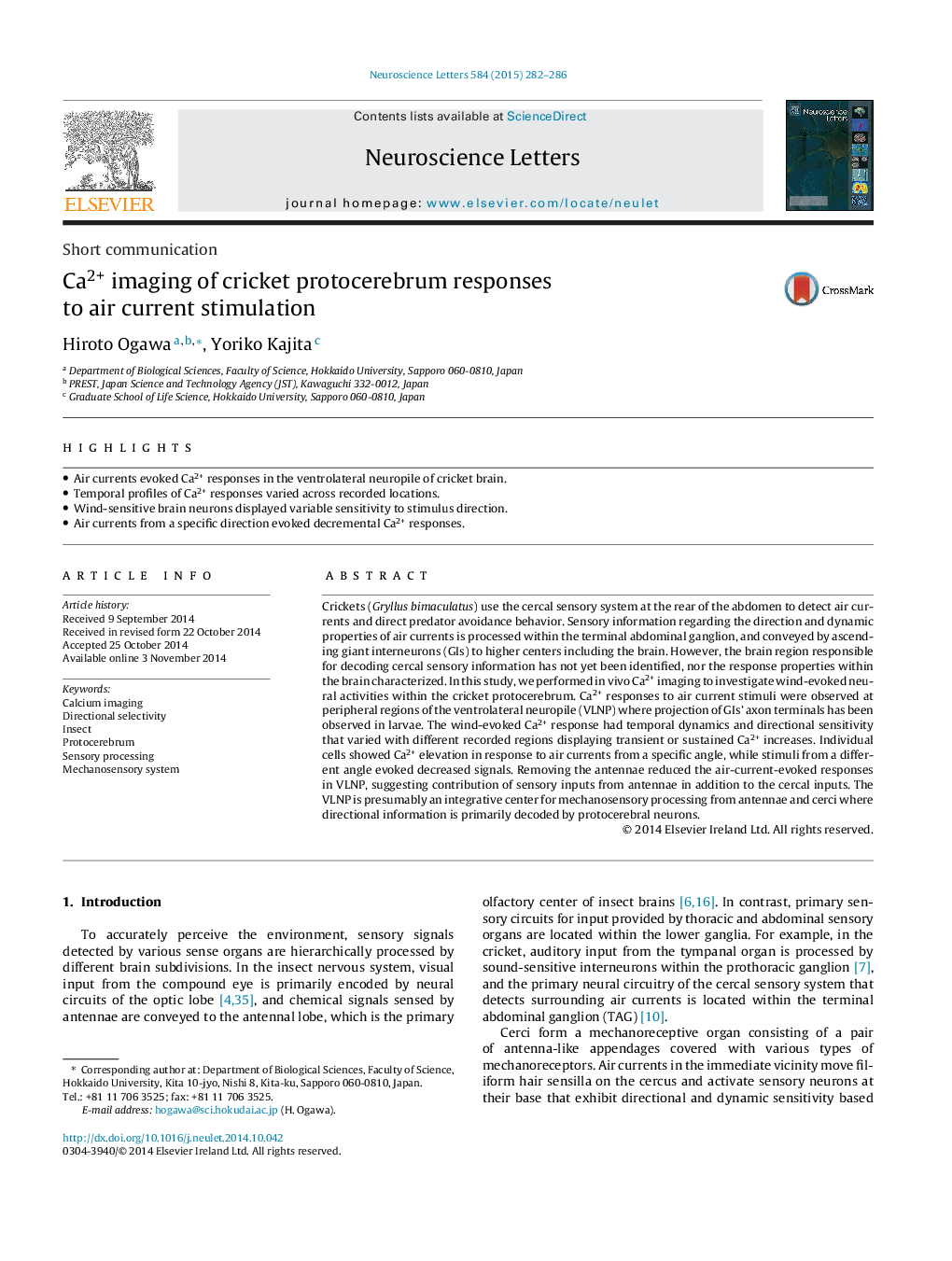| Article ID | Journal | Published Year | Pages | File Type |
|---|---|---|---|---|
| 6281499 | Neuroscience Letters | 2015 | 5 Pages |
Abstract
Crickets (Gryllus bimaculatus) use the cercal sensory system at the rear of the abdomen to detect air currents and direct predator avoidance behavior. Sensory information regarding the direction and dynamic properties of air currents is processed within the terminal abdominal ganglion, and conveyed by ascending giant interneurons (GIs) to higher centers including the brain. However, the brain region responsible for decoding cercal sensory information has not yet been identified, nor the response properties within the brain characterized. In this study, we performed in vivo Ca2+ imaging to investigate wind-evoked neural activities within the cricket protocerebrum. Ca2+ responses to air current stimuli were observed at peripheral regions of the ventrolateral neuropile (VLNP) where projection of GIs' axon terminals has been observed in larvae. The wind-evoked Ca2+ response had temporal dynamics and directional sensitivity that varied with different recorded regions displaying transient or sustained Ca2+ increases. Individual cells showed Ca2+ elevation in response to air currents from a specific angle, while stimuli from a different angle evoked decreased signals. Removing the antennae reduced the air-current-evoked responses in VLNP, suggesting contribution of sensory inputs from antennae in addition to the cercal inputs. The VLNP is presumably an integrative center for mechanosensory processing from antennae and cerci where directional information is primarily decoded by protocerebral neurons.
Related Topics
Life Sciences
Neuroscience
Neuroscience (General)
Authors
Hiroto Ogawa, Yoriko Kajita,
